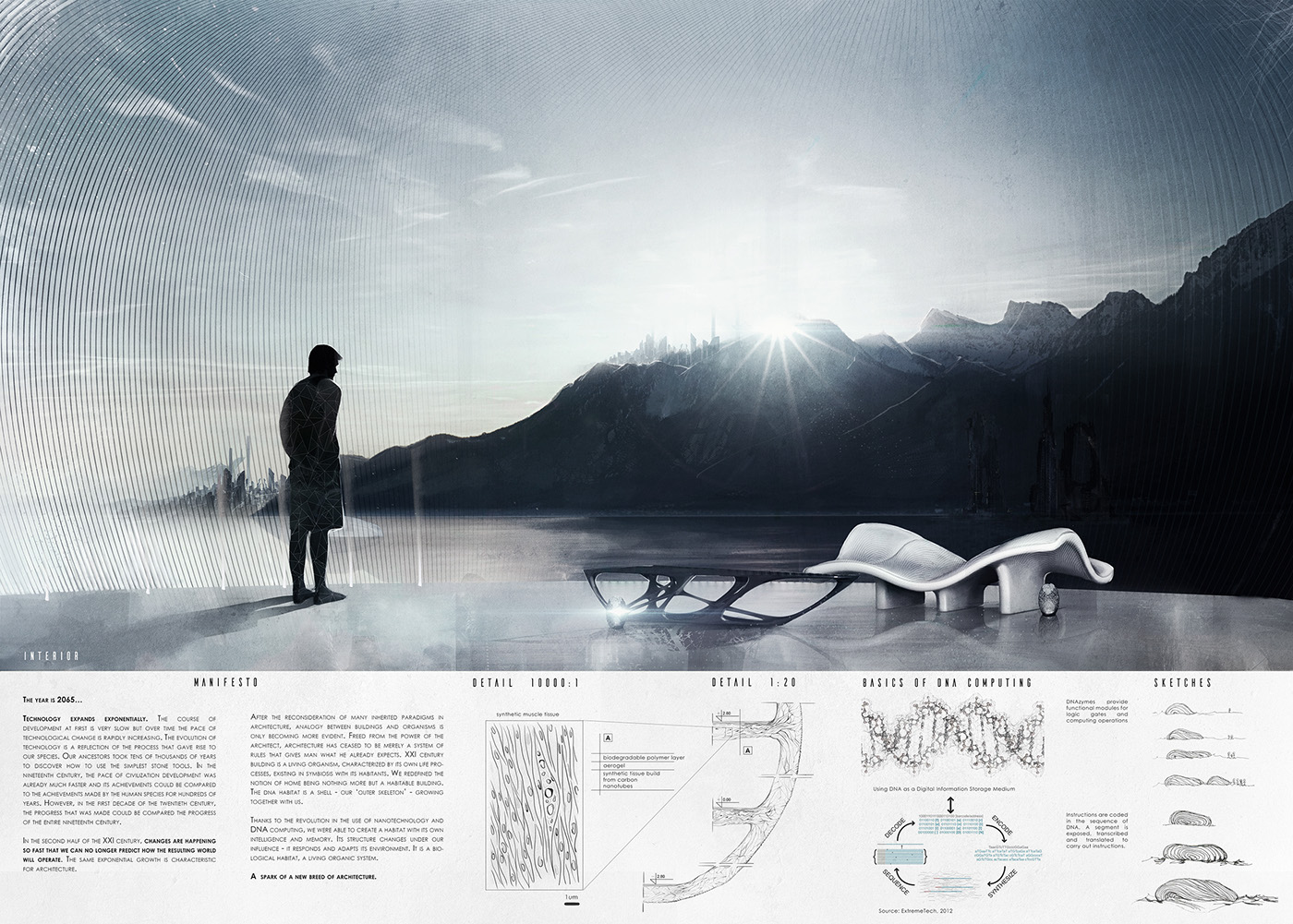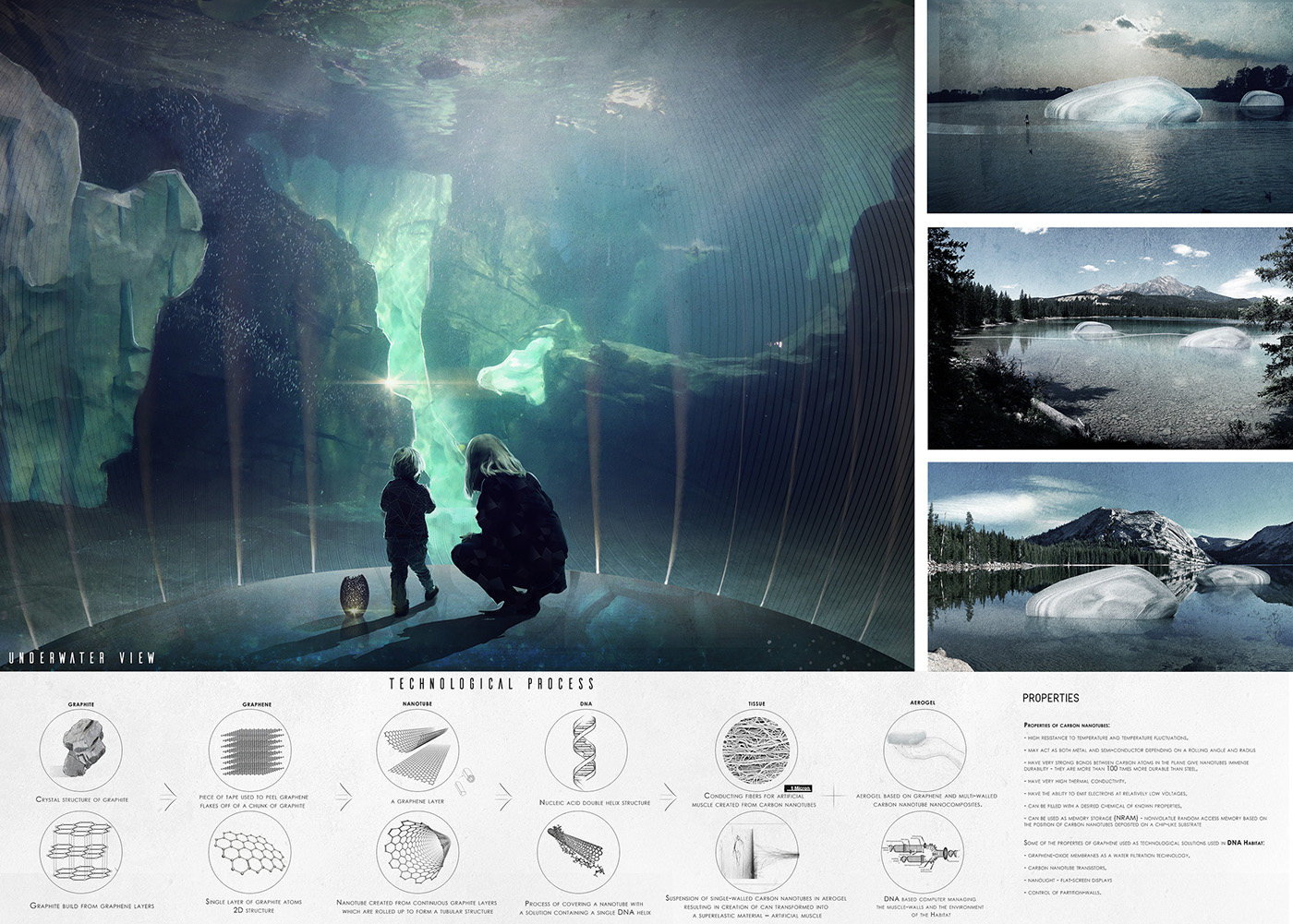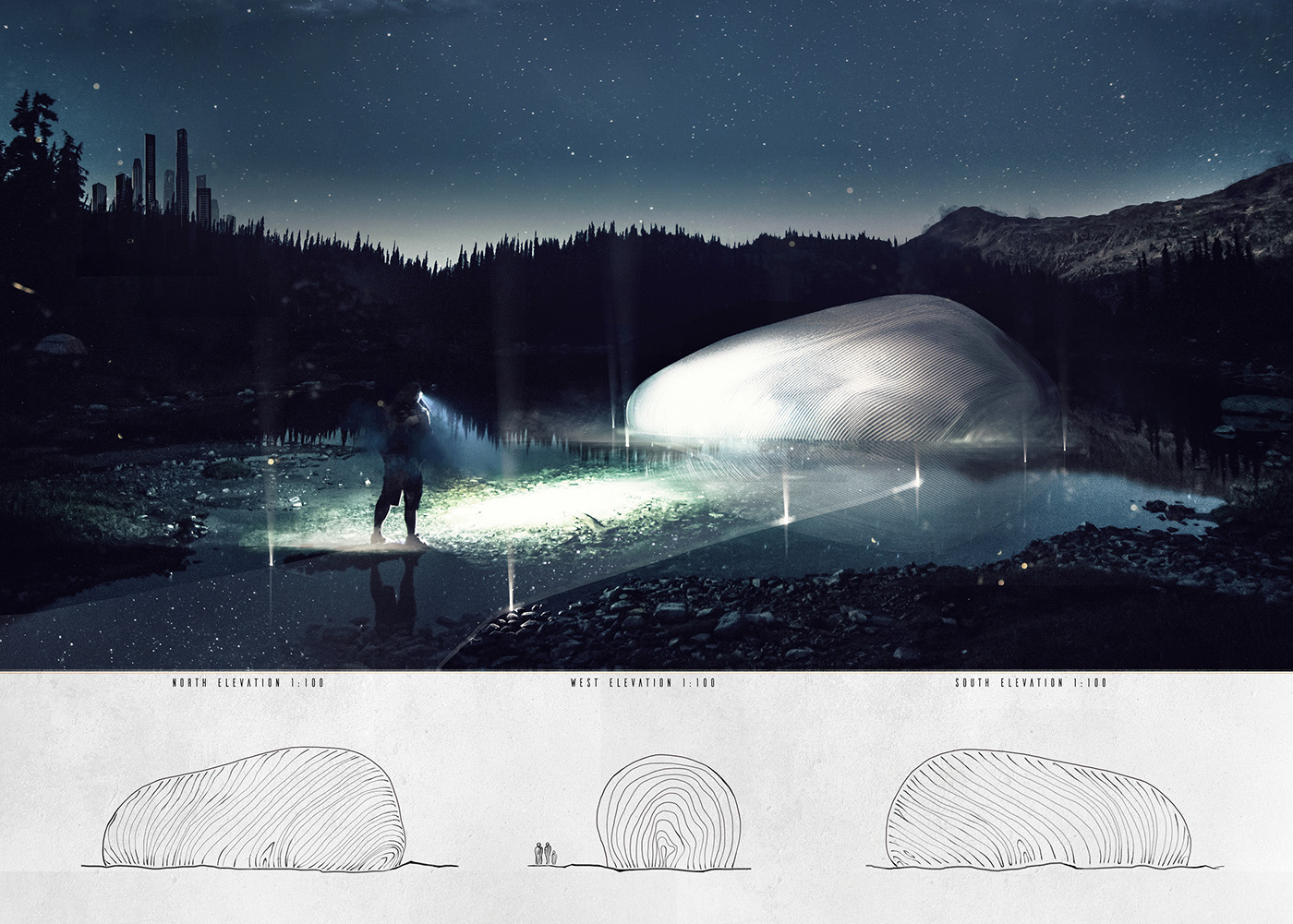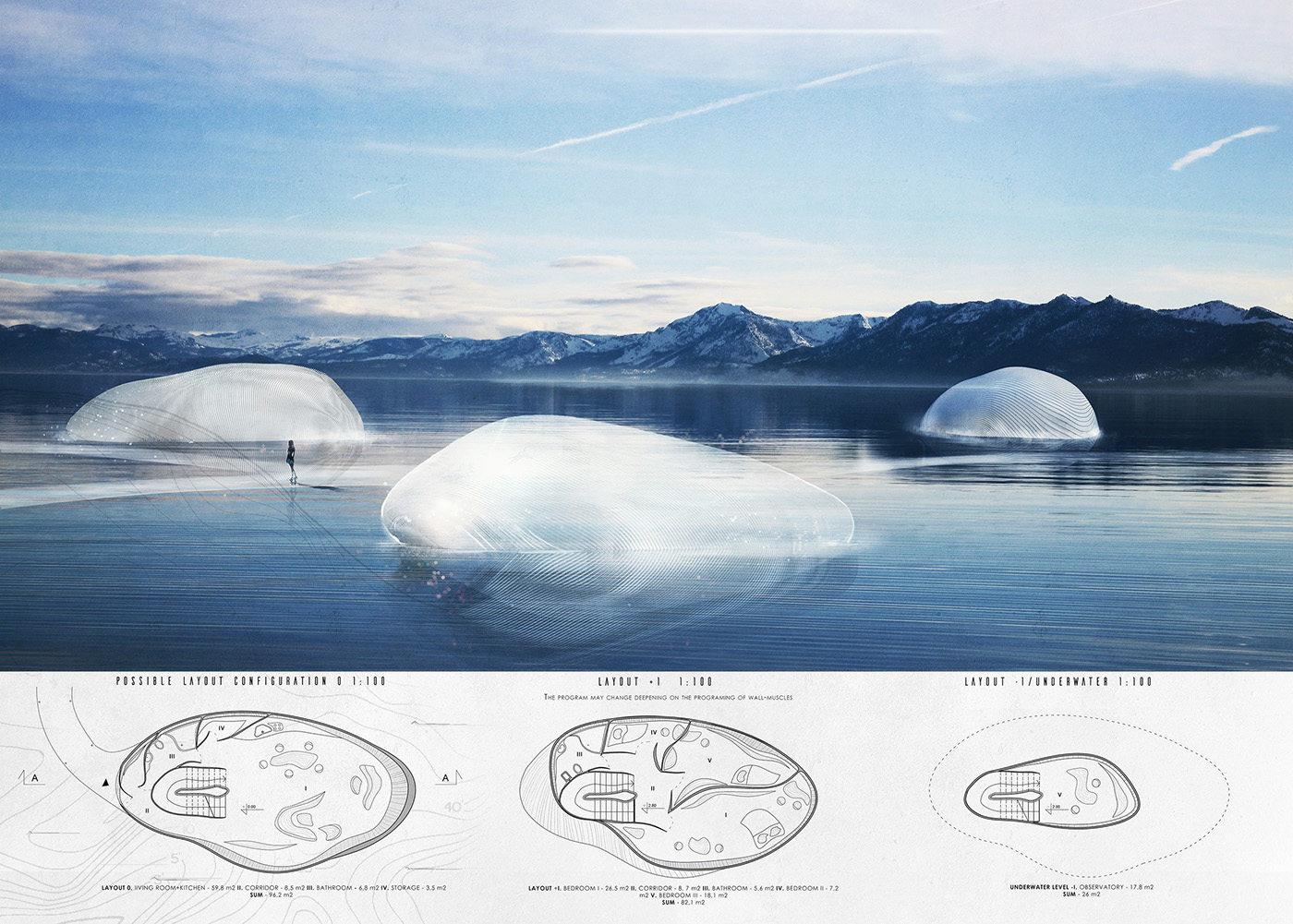
The year is 2065…
Technology expands exponentially. The course of development at first is very slow but over time the pace of technological change is rapidly increasing. The evolution of technology is a reflection of the process that gave rise to our species. Our ancestors took tens of thousands of years to discover how to use the simplest stone tools. In the nineteenth century, the pace of civilization development was already much faster and its achievements could be compared to the achievements made by the human species for hundreds of years. However, in the first decade of the twentieth century, the progress that was made could be compared the progress of the entire nineteenth century.

In the second half of the XXI century, changes are happening so fast that we can no longer predict how the resulting world will operate. The same exponential growth is characteristic for architecture.
After the reconsideration of many inherited paradigms in architecture, analogy between buildings and organisms is only becoming more evident. Freed from the power of the architect, architecture has ceased to be merely a system of rules that gives man what he already expects. XXI century building is a living organism, characterized by its own life processes, existing in symbiosis with its habitants. We redefined the notion of home being nothing more but a habitable building. The organic house is a shell - our ‘outer skeleton’ - growing together with us.
Thanks to the revolution in the use of nanotechnology and DNA computing, we were able to create
a habitat with its own intelligence and memory. Its structure changes under our influence - it responds and adapts its environment. It is a biological habitat, a living organic system.
A spark of a new breed of architecture.
a habitat with its own intelligence and memory. Its structure changes under our influence - it responds and adapts its environment. It is a biological habitat, a living organic system.
A spark of a new breed of architecture.

Timeline
3.5 billion years ago – birth of first complex molecular machines - cells
~460 BC – Democritus creates the concept of atom
1869 - DNA is discovered by Fryderyk Miescher isolates various phosphate-rich chemicals, which he calls nuclein, paving the way for the identification of DNA
1953 - DNA double helix structure is found
1959 - At the conference in Caltech, Richard Feynman suggests that it will be possible to directly manipulate individual atoms, giving birth to the development of early concept of nanotechnology
1968 - First use of nanostructures by Alfred Y. Cho and John Arthur. They develop a method of epitaxy (the deposition of a crystalline overlayer on a crystalline substrate ) that allows the formation of surface monatomic layers

1974 - Norio Taniguchi introduces the term NANOTECHNOLOGY for the manipulation of matter with at least one dimension sized from 1 to 100 nanometers.
1986 - Gerda Binning and Heinrich Röhrer invent scanning tunneling microscope - an instrument for imaging surfaces at the atomic level, based on a concept of quantum tunneling
1991 - Japanese physicist, Sumio Iijima for the firt time observers though the microscope the atomic structure and helical character of multi-wall and single-wall carbon nanotubes
1998 - The Cees Dekker team from TU Delft discovers the fascinating electronic properties of carbon nanotubes - the first single-molecule transistor

2002 - Researchers from the Weizmann Institute of Science in Rehovot create a programmable molecular computing machine composed of enzymes and DNA molecules instead of silicon microchips. The first DNA computer is build.
2009 - Artificial muscles that can expand and contract with tremendous speed are developed from carbon nanotubes. They are thirty times stronger than human ones
2014 - Poland receives a patent protection and launches the world's first global production of graphene
2023 - First case of killing cancer brain cells by injection of a programmable DNA computer utilized to detect multiple disease indicators
2025 – Anthony Vidler publishes his new book ‘Heterotopy ‘ describing psychological consequences of technological singularity in connection to public space

2029 – Detroit H+ starts a mass production of synthetic muscles nanotube
2032 - Bionanomaterials based on the DNA helix structure are presented for the first time at the Gratz Medical Conference
2037 - Protests in London against the implantation of human DNA and the Transhumanist Movement
2043 - Bionanomaterials are first used as a construction material in experimental Pavioion at EXPO 43, Chișinău
2048 - A prototype of a nanotube network is developed at Tajik Technical University
2055 - The first successful attempt of a controlled organic growth of nanotubes structure in laboratory conditions at the Academic Centre for Materials and Nanotechnology

2065 – The DNA House is build



